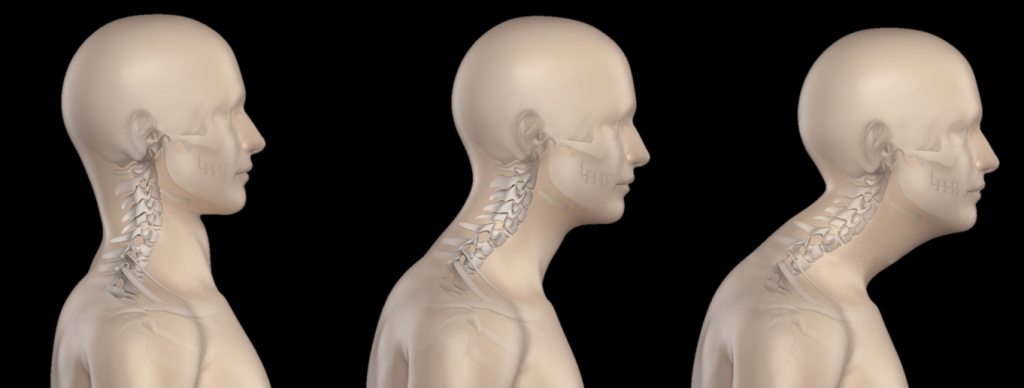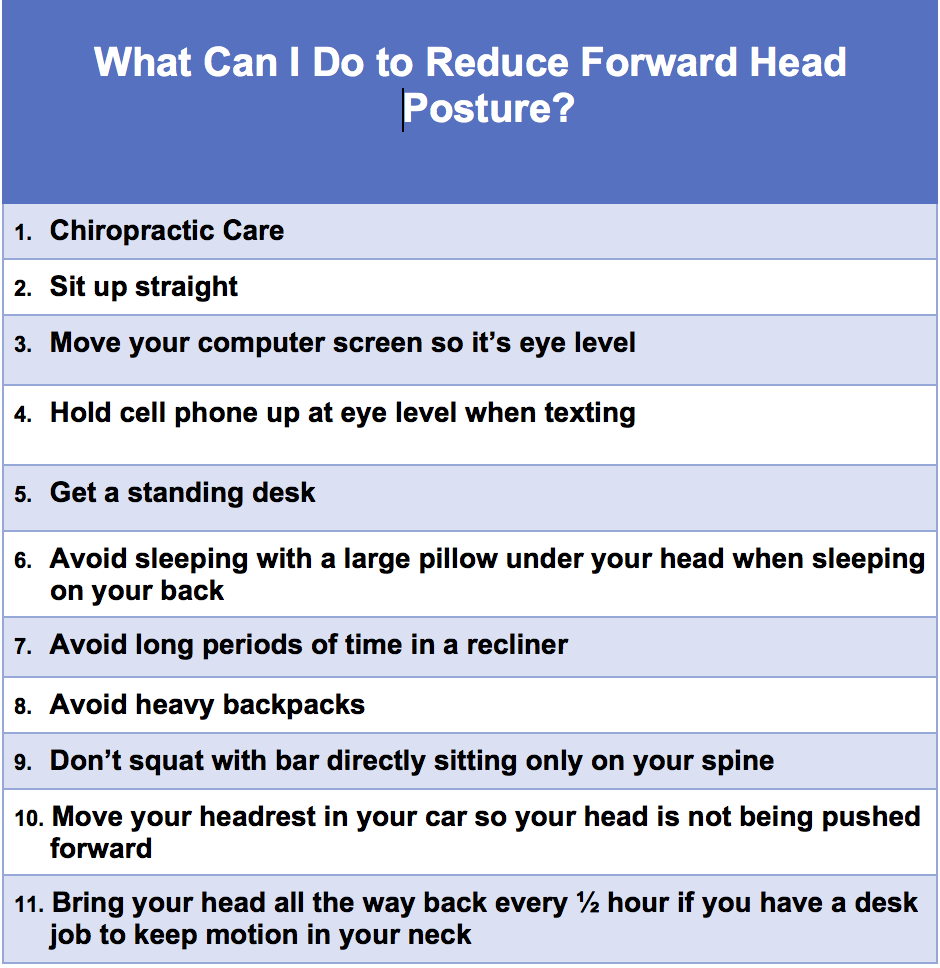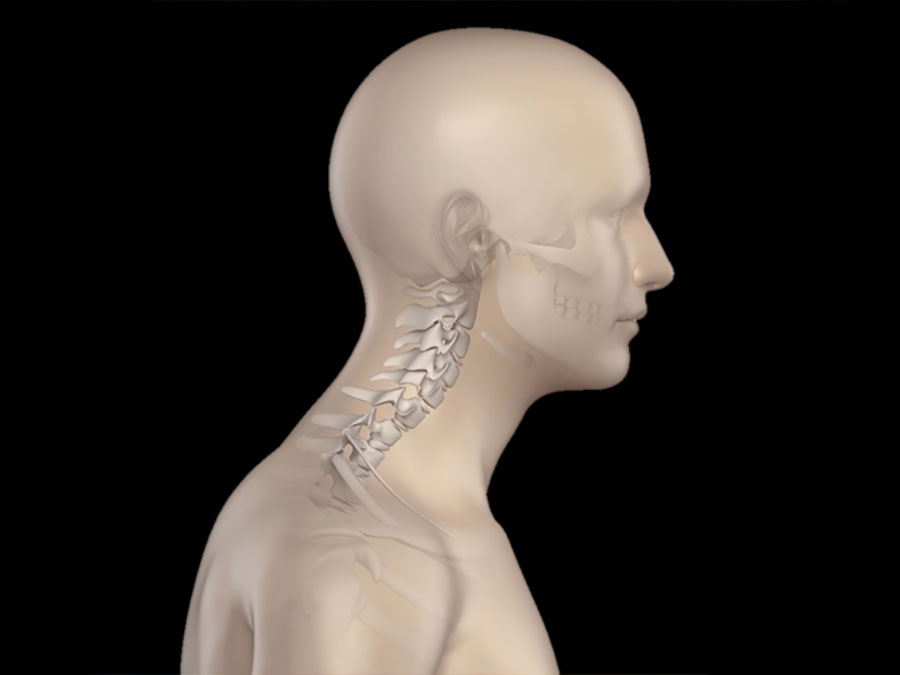Do You Have Forward Head Posture?

Forward head posture is an epidemic that is growing at an alarming rate. In today’s society, people are sitting at desk jobs all day, looking down at their cell phones, and on computers more so than ever. Kids are sitting in class more and more each year and their backpacks are not getting any lighter as their studies increase. Bad posture as a teen, if not corrected can lead to many pain symptoms in adulthood.21
What is Forward Head Posture?
Forward head posture is when your head is anterior, or leaning forward, compared to your shoulders and the rest of your body. This can be very damaging to your spine if left uncorrected for many years.
How do I Know if I Have Forward Head Posture?
Forward head posture is determined by the position of how far forward your head is in relation to your shoulders. If you leave your neck in this position for extended periods of time, you can start to change the shape of your cervical spine over time. If left uncorrected, this will put tension on your spinal cord, adding extra pressure to your spinal discs, fatiguing the muscles in your neck, leading to neck pain and feeling exhausted at the end of the day.



What are the Negative Health Effects of Forward Head Posture?
Seventy-eight percent (78%) of the studies have found a positive association between bad spinal curves and health disorders.22 Prolonged postural deformities, such as cervical kyphosis (reversed cervical curve), may result in the same neuronal dysfunctions that occur in tethered cord syndromes.7 The elongation of the spinal cord from forward head posture results in increased strain of blood vessels, depriving blood flow to the spinal cord.1 Tensile stress on your spinal cord and nerves can impair oxidative metabolism of the mitochondria. Since neural tissue relies heavily on oxygen for survival, this also means it can disrupt oxidative phosphorylation meaning that not as much Adenosine triphosphate (ATP) (AKA the energy currency of your cells) will be made. If the currency of energy cannot be produced for nerve tissue, it can progress to nerve dysfunction.2,3 These stresses and strains that alter oxidation can extend healing time and in fact, cause cellular disruption and degeneration (AKA arthritis)8.
Spinal cord stresses and strains have been linked with health conditions such as:
- Amyotrophic Lateral Sclerosis
- Urinary Incontinence
- Cerebral Palsy (7)
- Intramedullary Neoplasms
- Syringomylia (9-11)
Forward head posture can increase the pressure in and around the spinal cord, which is known to decrease the nerve signals. This will increase the risk of damage to the neural tissue coming to and from supporting tissues resulting in a variety of health conditions. 4,5,6 This epidemic will keep chiropractors in business for years to come until people take action in their health and posture. Chiropractic care works to put the proper motion back into the spine, allowing the spine to realign, reducing forward head posture, and ultimately increasing your overall health.
Resources:
- Fialka-Moser V, Uher EM, Lack W. Postural disorders in children and adolescents. Wien Med Wochenschr 1994; 144: 577-92
- Harrison D, Betz J, Ferrantelli J. Sagittal Spinal Curves and Health. J Vertebral Subluxation Res 2009; July: 1-8.
- Breig A. Adverse mechanical tension in the central nervous system: analysis of cause and effect– relief by functional neurosurgery. New York (NY): John Wiley and Sons; 1978.
- Harrison D, Cailliet R, Harrison D, et al. A Review of Biomechanics of the Central Nervous System Part III: Spinal Cord Stresses from Postural Loads and Their Effects. JMPT; 1999 Vol 22; Number 6; 339-410
- McCormick P, Stein B. Functional anatomy of the spinal cord and related structures. Neurosurg Clin N Am 1990; 1:469-89.
- Yamada S, Zinke D,, Sanders D. Pathophysiology of tethered cord syndrome. J Neurosurg 1981;54:494-503
- O’Brien M, Sutterlin C. Occipitocervical biomechanics: clinical and biomechanical implications for posterior occipitocervical stabilization and fusion. Spine: State Art Rev 1996;10:281-310.
- Tachibana S, Kitahara Y, Lida H, Yada K. Spinal cord intramedullary pressure: a possible factor in syrinx growth. Spine 1994;19:217-9
- Kitahara Y, Lida H, Tachibana S. Effect of spinal cord stretching due to head flexion on intramedullary pressure. Neurol Med Chir (Tokyo) 1995;35:285-8
- Lida H, Tachibana S. Spinal cord intramedullary pressure: Direct cord traction test. Neurol Med Chir (Tokyo) 1995;35:75-7
- Jarzem P, Quance D, Doyle D, Begin L, Kostuik J. Spinal cord tissue pressure during spinal cord distraction in dogs. Pine 1992;17:S227-S234.
- Breig A, Renard M, Stefanko S, Renard C. Anatomic bases of medical and surgical techniques. Healing of the severed spinal cord by biomechanical relaxation and surgical immobilization.
- Francel P, Long B, Malik J, Tribble C, Jane J, Kron I. Limiting ischemic spinal cord injury using a free radical scavenger 21-aminosteroid and/or cerebrospinal fluid drainage. J Neurosurg 1993; 79:742-51.

